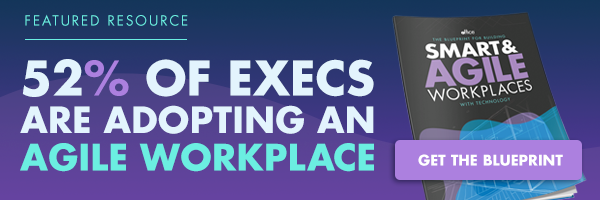Agile Practices: Hoteling, Hot Desking & Activity-Based Working?


The trend is clear—many companies are doing away with assigned seats in favor of more agile practices.
With this shift comes options. Businesses can choose from an assortment of workplace models based on their specific needs. Of these agile environment workplace management strategies, three popular options are hoteling, hot desking and activity-based working.
You may be wondering how each of these options differ from one another. Let’s take a closer look at what each agile environment workplace model entails.
3 Agile Practices: Hoteling, Hot Desking & Activity-Based Working
Hoteling
Reserving a room at a hotel ahead of time helps streamline the check-in process. The hotel is aware of your needs in advance and can provide you with your requested style of room upon arrival.
Office hoteling operates in a similar way. Before employees come into the office, they can schedule the workspaces they want to use on a particular day. Once they arrive, they can head straight to their requested workspace and set up shop.
Businesses that adopt a hoteling approach to the agile work environment have the benefit of allowing employees to pick and choose from a variety of workspaces. This workplace model also encourages employees who work from home to visit the home base from time to time and collaborate with their colleagues.
Hot Desking
Imagine if you had the opportunity to regularly sit with different company teams and departments. Not only would this help foster better communication, but it could also spark new opportunities for collaboration.
Hot desking is an agile environment workplace model that fuels such interactions. Employees can choose from any available space at one of several shared workstations. To prompt further communication and collaboration, they are encouraged to rotate their seating arrangements on a regular basis.
Hot desking is a good fit for companies that offer work-from-home options or flexible working hours. This provides more open space at the shared workstations, increasing the chances that this new office design will succeed.
Activity-based working is similar in nature to hot desking. Employees have access to a variety of workstations that they can rotate between in this agile work environment. What’s different about this workplace model is that employees are encouraged to move spaces based on their specific activities.
Say an employee wants to have an informal pow-wow with a few other team members. In an activity-based work environment, he or she would move to a particular space designed for this purpose. For more structured meetings, alternate spaces would be available as well.
ABW offers the ideal circumstances for employees to perform activities. What’s more: The continuous movement between spaces prompts employees to remain active throughout the workday.
Simplifying the Implementation of Agile Practices
No matter which workplace management strategy you choose — hoteling, hot desking or activity-based working — implementation is an important consideration. Companies need to have systems in place that support the transition to a new office design and encourage employee buy-in.
An integrated workplace management system (IWMS) is designed to do just that by providing real-time space management data and the ability to visualize space utilization. When used with an employee-facing workplace app, employees can see which spaces are available using a mobile phone or kiosk. They can also get help finding where those spaces are located if they’re unfamiliar with the area and reserve them.
As employees make these requests, facilities managers can access data on how different spaces and assets are being used. Analyzing this data helps pinpoint the spaces and assets employees use most — a valuable resource in ensuring that the current office configuration meets their desires and needs.
While investing in an IWMS is an essential first step to implementing new agile practices like these, organizations will get the most from their investment if they also have employee-facing solutions that allow the people who use these spaces to interact with them.
Fortunately, iOFFICE has a solution that unifies workplace leaders and the workforce, delivering a powerful employee experience while providing more insight to leaders. Hummingbird is a set of solutions that empower employees at multiple touchpoints — mobile apps, kiosks and integrations with IoT sensors — while connecting with an organization’s existing IWMS software. To learn more, request a demo today.
